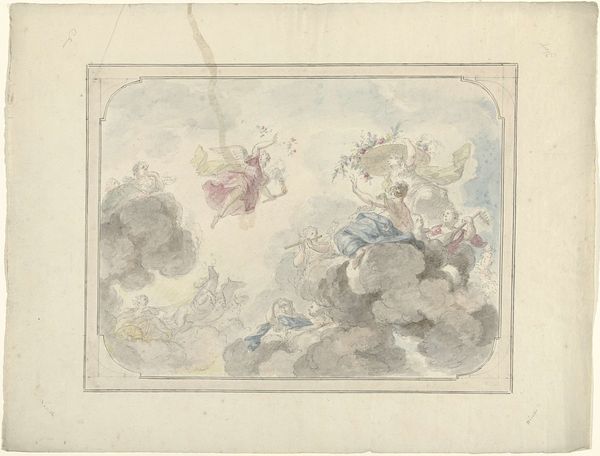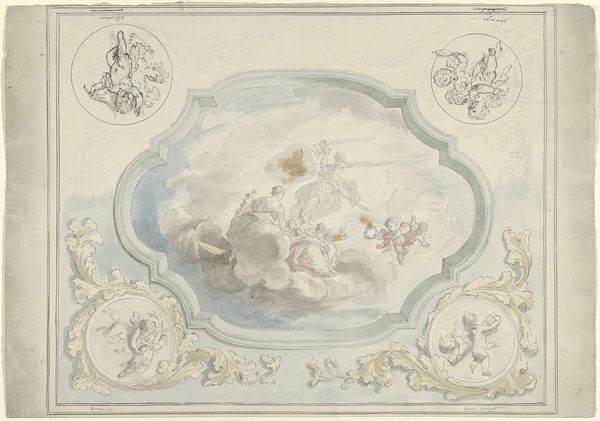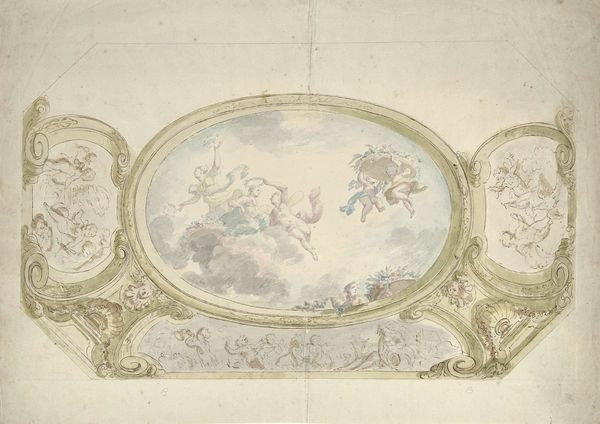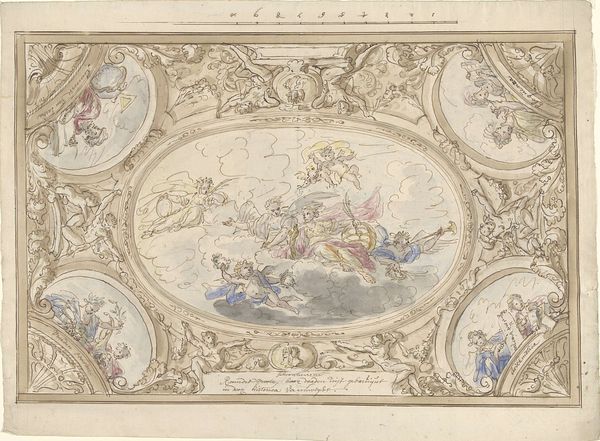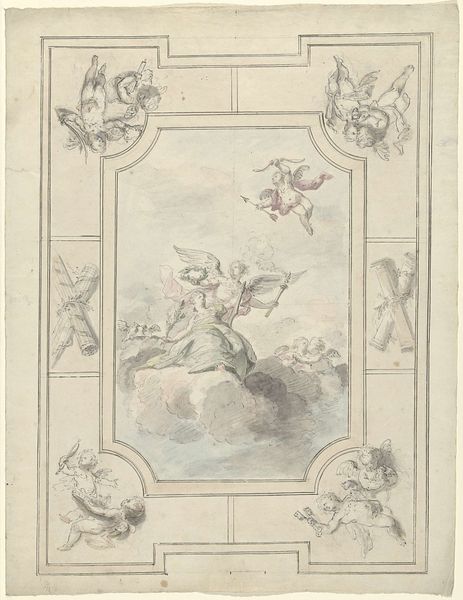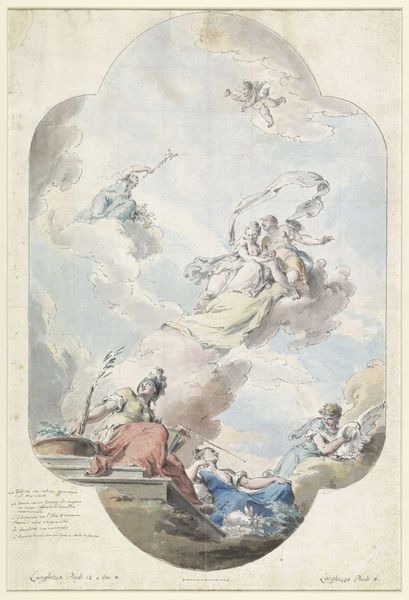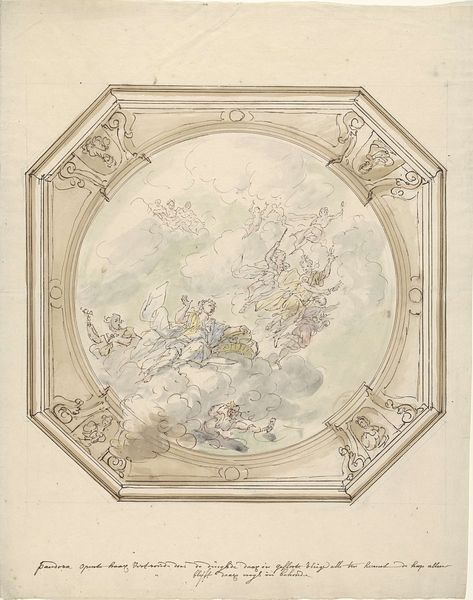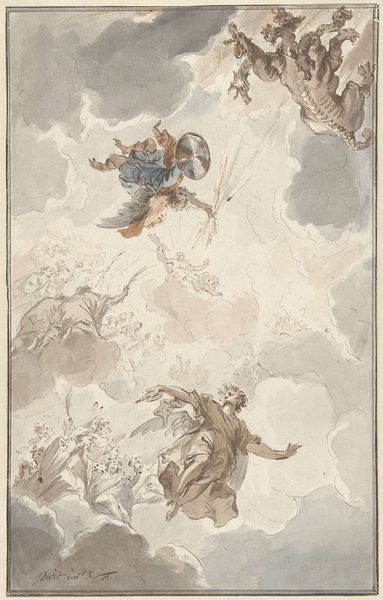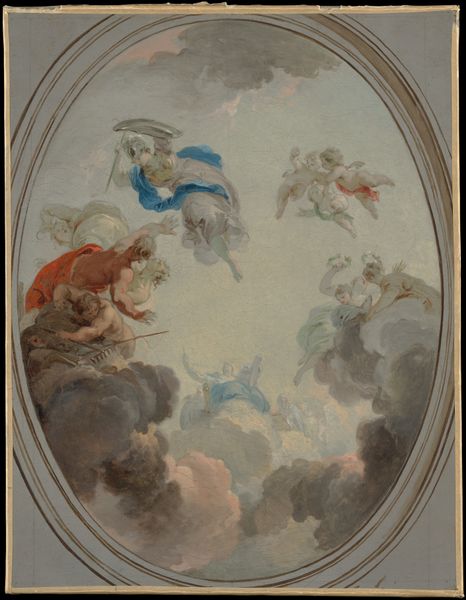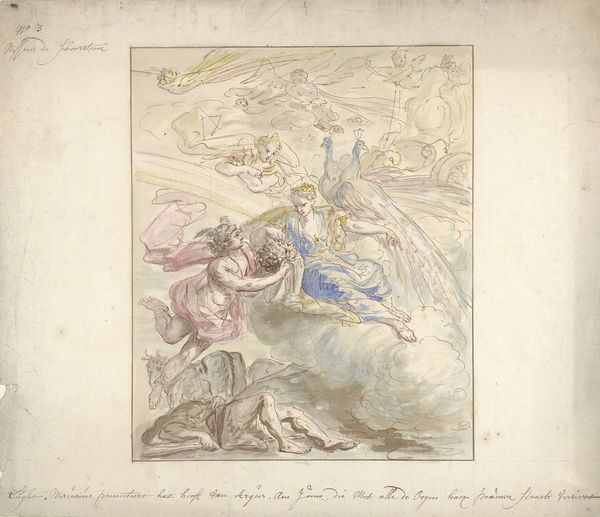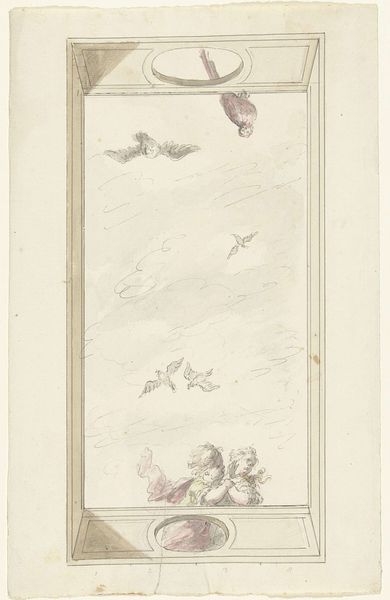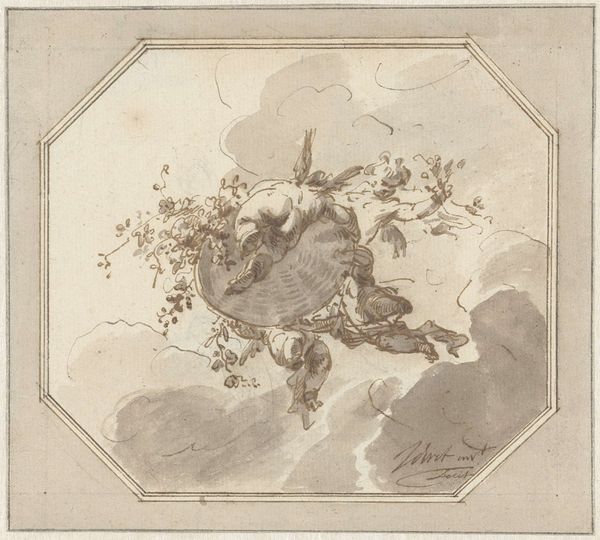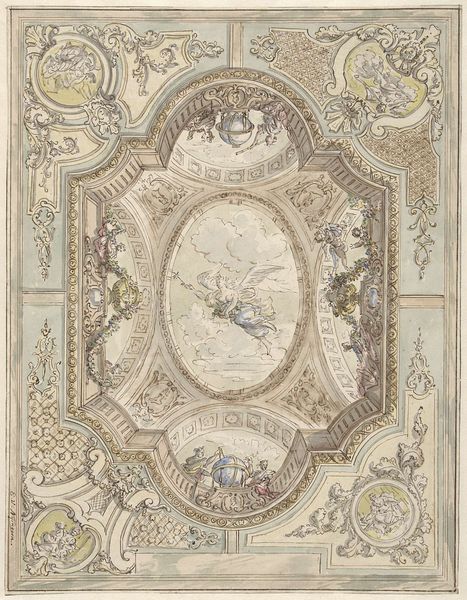
Ontwerp voor een plafondschildering met musicerende vrouwen op wolken 1715 - 1798
0:00
0:00
watercolor
#
allegory
#
watercolor
#
coloured pencil
#
watercolor
#
rococo
Dimensions: height 505 mm, width 387 mm
Copyright: Rijks Museum: Open Domain
Curator: This watercolor, attributed to Dionys van Nijmegen and created sometime between 1715 and 1798, is titled "Ontwerp voor een plafondschildering met musicerende vrouwen op wolken," or "Design for a Ceiling Painting with Music-Making Women in the Clouds." Editor: My initial reaction is a sense of lightness, airiness. The oval composition and pale washes of color really emphasize the heavenly theme. It's an idealized space, perfectly Rococo in its grace. Curator: Indeed. And the Rococo style, with its emphasis on ornamentation and pastel palettes, often served to legitimize and aestheticize the indulgences of the aristocracy. These female musicians playing their instruments among the clouds become an allegory for leisure and refinement. Consider the social stratification implied; who is privileged enough to inhabit such a blissful, unproductive space? Editor: Absolutely. There is an almost giddy excessiveness here in the delicate rendering of fabric, wings, instruments, clouds, cherubic faces, even the frame enclosing the scene. Note the painterly application of the color; in some areas it is thick with sediment, creating interesting contrast of texture and weight in an otherwise ephemeral medium. Curator: The inclusion of putti, or cherubs, also points to a symbolic language used to signal piety, yet blended with the sensuality so popular in the period. The imagery certainly speaks to broader themes of divine right and the visual representation of power in 18th-century Europe. The presence of musical instruments underscores an allegiance to Apollo and the Muses—patrons of music, poetry, and the arts—implying refined cultivation and good taste on behalf of the patron commissioning the final work. Editor: The loose application of the washes, almost like preparatory underpainting, conveys an unfinished state which offers viewers a fascinating insight into period technique. Look at how the cloud formations act as tonal scaffolding supporting a cluster of feminine figures. The floral basket anchoring the lower center contrasts the airy figures overhead with earthly presence. The design relies heavily on principles of contrast and counterpoint for visual stimulation. Curator: Reflecting on this work through a critical lens offers us insights into the historical context in which beauty was not merely aesthetic but rather functioned as an ideological apparatus, reinforcing class divisions and justifying social hierarchies. Editor: Yes, by examining formal strategies, the role of color, composition, line, and symmetry we can see that even ephemeral visual media like watercolor acted as potent vehicles to uphold structural and thematic unity.
Comments
No comments
Be the first to comment and join the conversation on the ultimate creative platform.
